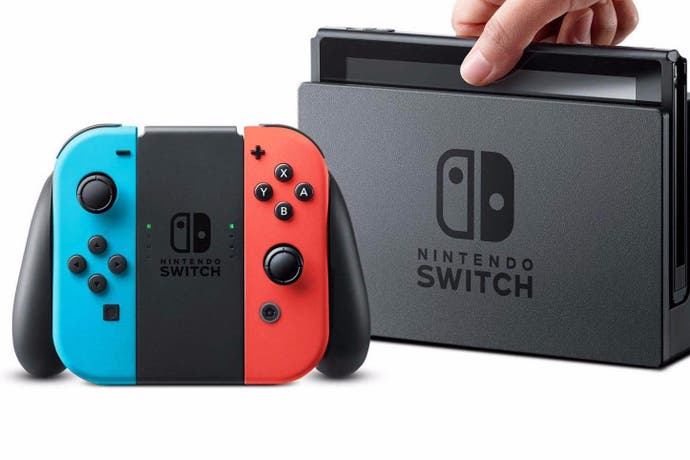A complete history of Nintendo console launches
And what they can tell us about Switch.
Regular readers will know that I have an oft-repeated mantra: never rule out Nintendo. The company has been written off by the wider games industry more times than you can count and invariably bounces back with something surprising, sometimes even game-changing, that ensures its success for another decade or so.
Yet when I looked at the launch plans for Nintendo Switch last month, I was worried, and concluded that the strange new machine was in trouble. It wasn't the hardware itself, which was delightful, so much as the pricing, the software line-up and the marketing, along with a competitive environment that was hostile to Nintendo's unique, not to say quixotic, way of doing things.
But I remembered my mantra, and also remembered that a lot of this sounded awfully familiar. Hadn't we said much the same before? And been proven wrong at least half the time? With that in mind, I recruited my fellow Nintendo-watchers Martin Robinson and Tom Phillips and we set out to scour the Nintendo history books for comparisons. How does Switch really compare to Nintendo launches past, and what can we tell from those about its prospects for the future?
(Pedant's corner: for the purposes of this article we decided not to classify Color-TV Game and Game & Watch as game consoles in the modern sense. Oh, and if anyone can unearth or remember the UK launch prices for NES, Game Boy and GBA, do let us know in the comments!)
Nintendo Entertainment System

Launch date: July 1983 (Japan, as Family Computer), October 1985 (North America), September 1986 (Europe), 1987 (UK)
UK launch price: Unknown, $199 in the US with Super Mario Bros. included.
Number of launch games in the UK: 8
Key launch games: Super Mario Bros., Duck Hunt, Excitebike
Lifetime unit sales: 62 million
How was the launch perceived? When Nintendo was preparing to launch the NES in the West in 1985 - some two years after the machine was introduced in Japan as the Famicom - there wasn't much optimism. The market in America was still feeling the repercussions of the video game crash that had seen revenues drop by some 97 per cent. Even within Nintendo itself, Minoru Arakawa, the founder of Nintendo of America, expressed concern that the video game fad had passed for good. The NES proved that emphatically wasn't the case, providing the foundations on which much of Nintendo still rests on today; after a soft launch in New York, the system went on to a rapturous reception when it launched nationwide in North America in 1986, accompanied by an epoch-making line-up of 17 excellent games, including the indelible Super Mario Bros. (Sometimes there are advantages to taking two-and-a-half years to cross the Pacific.)
And how did it do in the end? While the NES was outsold by the Sega Master System in Europe, it has gone down as an iconic console - you only have to look at the inflated prices being asked for the NES Classic Mini right now to see it's a machine held in high esteem - and much of what followed for Nintendo was built upon the success of the console. The NES introduced millions of players to the worlds of Mario, Zelda, Samus and so much more besides. A game-changer in its day, and an enduring classic ever since.
Game Boy
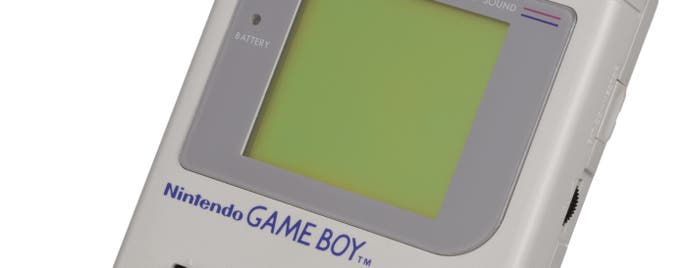
Launch date: April 1989 (Japan), July 1989 (North America), September 1990 (Europe)
UK launch price: Unknown, $89.99 in the US
Number of launch games in the UK: 4
Key launch games: Tetris, Super Mario Land
Lifetime unit sales: 119 million
How was the launch perceived? The Game Boy's contemporaries - Atari's Lynx and Sega's Game Gear - offered more impressive hardware, but Nintendo's own handheld benefitted from the remarkable momentum of a company in its pomp, the success of the NES making the Game Boy almost irresistible. It was helped by an attractively low price and perhaps the most effective launch game ever: Alexey Pajitnov's Tetris, a puzzle game first spotted by Nintendo of America's Minoru Arakawa, which set him on a globe-trotting tour in an effort to acquire the rights (an incredible story most recently chronicled in Box Brown's graphic novel Tetris: The Games People Play). It was worth the effort, it seems, as the compulsive and immediate Tetris was the ideal handheld game and helped the Game Boy become nothing short of a phenomenon.
And how did it do in the end? As loved as the NES was, the Game Boy is perhaps the archetypal piece of Nintendo hardware. Famously built around Gunpei Yokoi's edict of lateral thinking with seasoned technology, it showed the company taking its own path to impressive effect, a philosophy that would be repeated with great success with both the DS and the Wii further down the line. As a piece of industrial design, it's also perhaps Nintendo at its strongest: sturdy, playful and with the welcoming lines of a well-loved toy, it's arguably never been bettered in the world of video games. Including its Pocket and Color hardware revisions, Game Boy lasted for over a decade, sold almost twice as many consoles as NES, and of course, introduced the world to Pokémon.
Super Nintendo Entertainment System

Launch date: November 1990 (Japan, as Super Famicom), August 1991 (North America), April-June 1992 (Europe)
UK launch price: £150
Number of launch games in the UK: 3
Key launch games: Super Mario World, F-Zero, Super Tennis
Lifetime unit sales: 49 million
How was the launch perceived? The SNES may have gone on to cement its position as one of Nintendo's finest consoles, with an unrivalled software catalogue, but its early days were far from stellar. While Japan received the console with open arms and a small dose of the hysteria that typified launches at the time, in the West, Nintendo got off to a much slower start - due in no small part to Sega stealing a march with the earlier release of the Mega Drive (or Genesis, if you must). The years have been much kinder to SNES launch title Super Mario World than they have to Sonic the Hedgehog, but at the time of the SNES' launch, the plumber's return was seen as overly iterative, while Sega's mascot carried the shock of the new. It was left to F-Zero to provide a fairly convincing look at the shape of things to come, though it formed part of a weak launch line-up in Europe of a mere three games. And you thought the Switch launch was threadbare...
And how did it do in the end? The SNES outsold its arch rival the Mega Drive in a hard-fought war, and it has earned a special place in fans' hearts as the home of many of the finest 2D games ever made: classics such as Super Metroid, Yoshi's Island, Earthbound and Final Fantasy 6 are as spectacular now as they were in their day. Perhaps the SNES' greatest legacy, however, is the role it played in the schism between Sony and Nintendo. A moment of corporate arrogance from Nintendo - which was very much their style at the time - over a planned CD-ROM add-on pushed Sony to go its own way with the PlayStation. Nintendo would feel the repercussions of this move for generations to come, and it wasn't until the Wii that the company would find itself on a level footing - of sorts - with the rival it helped create.
Virtual Boy
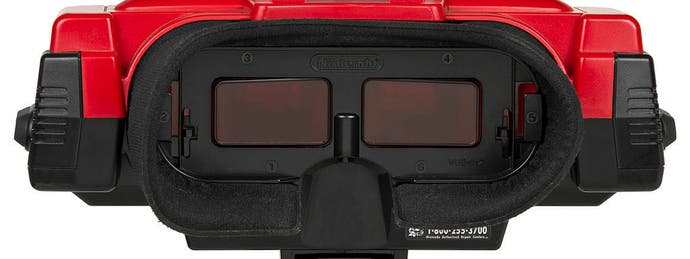
Launch date: July 1995 (Japan), August 1995 (North America)
UK launch price: N/A, $179 in the US
Number of launch games in the US: 4
Key launch games: Mario's Tennis, Galactic Pinball
Lifetime unit sales: 770,000
How was the launch perceived? Stretching Gunpei Yokoi's idea of lateral thinking with seasoned technology to breaking point and beyond, the Virtual Boy's roots date back to 1985 and a VR prototype being developed by Reflection Technology. The Massachusetts-based company had been shopping its technology around for a while - Sega had seen it and declined before Yokoi took a shine to an idea he believed others would find hard to replicate. By the time the Virtual Boy came out in 1995, a number of compromises had been made - head tracking had been banished due to concerns about motion sickness, and the display was limited to a red monochrome. Reaction to it upon its unveiling in 1994 was muted to say the least, and there was little more than bewilderment upon its eventual release in 1995. The Virtual Boy never received an official release in Europe.
And how did it do in the end? Remembered as one of Nintendo's most catastrophic failures - it failed to reach a million sales in its short time on the shelves - the Virtual Boy has at least earned some cult appeal in the intervening years. It would be tempting to say the device was ahead of its time, especially from the perspective of an era when commercial virtual reality units have finally made their way into the living room, but in truth the Virtual Boy was too compromised, too underdeveloped and not supported anywhere near enough by a Nintendo that already had its eyes on the N64 to be anything other than a flop. A curio, then, and nothing more.
Nintendo 64
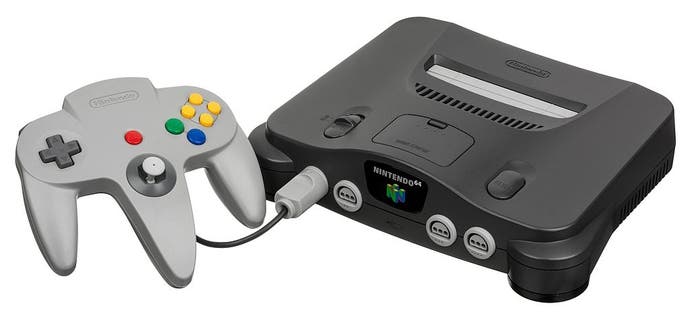
Launch date: June 1996 (Japan), September 1996 (North America), March 1997 (Europe)
UK launch price: £250 - which compared very unfavourably with a $199 price tag in the US (not to mention the price of a PlayStation at the time) and was cut to £150 just two months later
Number of launch games in the UK: 6 (only two at US launch, though)
Key launch games: Super Mario 64, Pilotwings 64
Lifetime unit sales: 33 million
How was the launch perceived? Although its legacy has been secured by some of greatest home console games in history, it's easy to forget just how troubled the N64's launch was. The wait for it was agonising; it was already trailing Sony's rival PlayStation to market by a year when its launch was delayed by a further six months. And Nintendo's decision to stick with cartridge media was hugely controversial. It undermined support from third-parties (who were already unhappy with the company's stiff licensing fees) and it sent game prices up to record highs: Turok: Dinosaur Hunter famously retailed for $80, and it was common to pay £60 for N64 games in the UK. Software support dried up as developers flocked to Sony; a pitifully small launch line-up was followed by a year-long drought, and another agonising wait, for The Legend of Zelda: Ocarina of Time. On the other hand, N64 was clearly powerful - the solidity of its 3D rendering wowed at the time - and its weird trident-shaped controller introduced the world to analogue controls. Oh, and it released with Super Mario 64, nothing less than a visionary masterpiece of game design that exploded the possibilities of 3D gaming.
And how did it do in the end? Nintendo 64's lifetime sales were respectable, and kept Nintendo's skin in the game during a fiercely competitive time in a market whose rulebook had been ripped apart by Sony. But it was certainly a step back for Nintendo, and it's fair to say that its relations with third-party publishers never recovered from that fateful decision not to sell games on discs. Nintendo is still paying the price for that move 20 years later, with weak third-party game support a given on every one of its consoles since. For better and worse, this was the beginning of the Nintendo we still recognise today: stubborn, proudly innovative, somewhat sidelined - and betting everything on in-house games of peerless quality.
Game Boy Advance
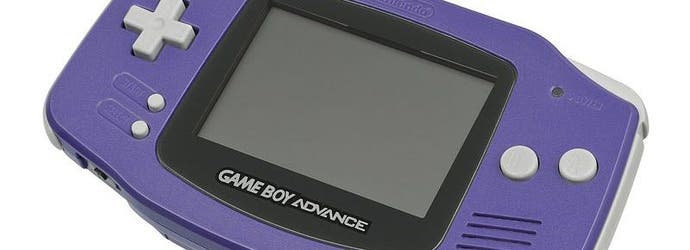
Launch date: March 2001 (Japan), June 2001 (North America and Europe)
UK launch price: Unknown, $99 in the US
Number of launch games in the UK: 14
Key launch games: Super Mario Advance, Tony Hawk's Pro Skater 2
Lifetime unit sales: 81 million
How was the launch perceived? Arriving very shortly before GameCube, Game Boy Advance was probably Nintendo's most low-risk console launch ever: a nicely designed, but cautious and rather unspectacular replacement for the ageing Game Boy platform. Nintendo enjoyed such a complete hegemony over handheld gaming at this point that it needed to take no risks - and it didn't, allowing for faster and more colourful 2D gaming, a safe price point, nothing remarkable in the way of new features, and a software line-up bulging with third-party contributions but no killer app. The most unusual thing about it was the choice of an unloved mongrel Mario game, Super Mario Bros. 2, to head up the launch in remade form. Fans complained about the very dim screen with no backlight, which already looked a bit backward at the time (and inspired many an unofficial mod). But nothing could realistically stop it.
And how did it do in the end? Is GBA Nintendo's most boring console? Perhaps: by the company's wacky standards, it was a very conservative design, while its software catalogue leaned heavily on the past glories of the NES, SNES and Game Boy. Innovation mostly came in the form of a cavalcade of accessories, including the rarely used but ahead-of-their-time GameCube link cable and e-Reader scanning device. It saw a handful of great original games, including Intelligent Systems' flawless strategy classic Advance Wars and the almost postmodern madness that was WarioWare, Inc.; it also enjoyed some lovely hardware revisions in the form of the clamshell SP and miniature Micro. But it was thanks to the Pokémon phenomenon, above all else, that it couldn't fail.
GameCube
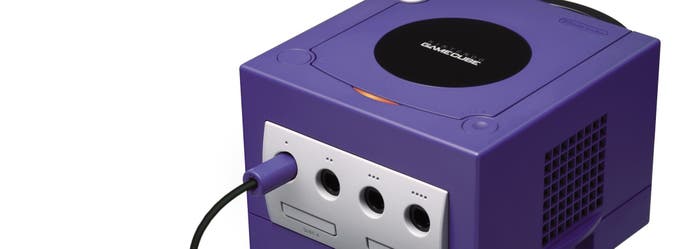
Launch date: September 2001 (Japan,) November 2001 (North America), May 2002 (Europe)
UK launch price: £129
Number of launch games in the UK: 21
Key launch games: Luigi's Mansion, Super Monkey Ball, Wave Race, Star Wars: Rogue Leader
Lifetime unit sales: 22 million
How was the launch perceived? A pre-emptive pre-launch price cut from £149 to £129 and a rock solid line-up of launch games gave GameCube a strong start - even if demand was tempered somewhat by the achingly long wait for the console to arrive in Europe. Luigi's Mansion was criticised for not being the Mario game many wanted alongside their new console, but Super Mario Sunshine was only a few months off, and Nintendo had the GameCube's release schedule well-stocked until then with Super Smash Bros. Melee and Pikmin. Third-party support was also decent, with platform exclusives such as the superlative Super Monkey Ball and Rogue Leader - both reasons to pick up the console by themselves. From a software point of view, it was a very strong start, and the machine also boasted a tempting price tag, a unique, charming design and a superb controller. But strategically, Nintendo was still off the pace. The console took too long to get to market again, and though it did leave cartridges behind, Nintendo couldn't let go of esoteric bespoke media entirely - snubbing industry-standard DVDs in favour of GameCube's cute, but storage-limited, miniature discs.
And how did it do in the end? Regarded as a failure in terms of hardware sales, GameCube suffered from competition with the already well-established PlayStation 2, and its purple-lunchbox looks branded it as the 'kiddie' choice - which of course left it forever uncool among kids. Older players, meanwhile, frequently bemoaned its lack of multimedia functions. GameCube ended up selling only slightly less than the upstart Xbox, but its sales and reputation were dwarfed by Sony's console. Its software line-up remains one of Nintendo's finest, an all-too-brief run of genuine classics: Smash Bros. Melee is still a fixture of the world's top fighting game events; Pikmin and Animal Crossing, both born on GameCube, now rank among Nintendo's most prized IP; Zelda: The Wind Waker, reviled before launch for its dramatic change of art style, now rightfully places among the series' finest entries; and then there's Retro Studios' lonely masterpiece, Metroid Prime. Many complained about GameCube's ineffectual marketing and the eventual drought of software towards the end of its life but, looking back, we never realised how good we had it. Nintendo, for its part, appeared quickly to decide that even the quirky GameCube was too close in style and substance to its rivals. From now on it would pursue its own, third way.
DS
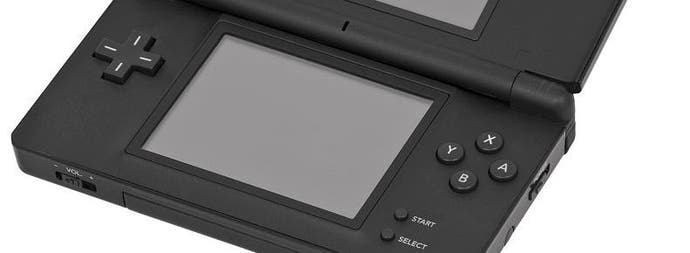
Launch date: November 2004 (North America), December 2004 (Japan), March 2005 (Europe)
UK launch price: £129
Number of launch games in the UK: 16
Key launch games: Super Mario 64 DS, WarioWare Touched!, PictoChat
Lifetime unit sales: 154m
How was the launch perceived? DS was the first Nintendo launch under new president Satoru Iwata, so all eyes were on it for any perceived weakness or changes of direction - and before launch, it was met with nothing short of ridicule. A Frankenstein's monster seemingly cobbled together randomly from a parts bin, nobody understood the appeal of its dual screens or believed that touch-screen gaming could possibly work. Also, it was a pretty homely-looking thing. We could scarcely have been more wrong. A nominally impressive port of Super Mario 64 gave no indication of the machine's real talents, but the included stylus-controlled mini-games gave some hint, as did WarioWare Touched! and the included PictoChat app. In an age before smartphones, Nintendo's new handheld brought this new, instinctive type of gaming to the masses - although there was no knowing how successful this would turn out to be. (The less said about the "sexy" advertising targeting young men with the eyebrow-raising phrase "Touch Me", the better, mind.)
And how did it do in the end? DS is Nintendo's best-selling games machine of any kind, and the best-selling games handheld from any manufacturer. This success was not instant: it took a year or so to gain momentum, but when it did, DS was unstoppable. Nintendogs, Brain Training, and Level-5's Professor Layton carried the handheld to an audience far wider than that of even the Game Boy, accompanied by some genius marketing aiming it at older buyers who would never consider a traditional video game console. The DS would also host more conventional hits like New Super Mario Bros., Animal Crossing: Wild World and Pokémon Diamond & Pearl: all told, an astonishing 140 DS games sold more than 1 million copies. It's also important to remember DS as the first Nintendo device to dip its toe in the internet, offering play over Wi-Fi, a paid browser, and on the DSi, Nintendo's first digital game downloads. Iwata had made his mark - and he had similarly unconventional plans for the living room.
Wii
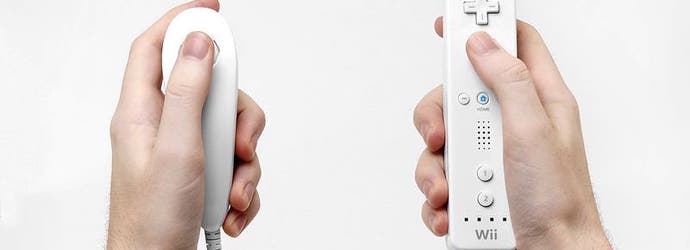
Launch date: November-December 2006 (North America, Japan, Europe)
UK launch price: £179
Number of launch games in the UK: 20
Key launch games: Wii Sports, Wii Play, The Legend of Zelda: Twilight Princess
Lifetime unit sales: 101 million
How was the launch perceived? We didn't learn our lesson from DS, and sniggered again - though mostly, and forgivably, at the (still rather silly) name. Beyond that, there was a lot of excitement about the TV-remote-shaped motion controller, but a fair measure of suspicion too - how would we be able to play the Nintendo games we loved on it? - as well as concern that the machine was underpowered and wouldn't support HDTVs. Nintendo's choice of codename, Revolution, seemed a bit hubristic. There was a big launch line-up, but a great deal of it was worthless shovelware, which unfortunately turned out to be an accurate preview of how third-parties would treat the machine. Even sceptics had to admit that the launch was perfectly executed, though, with an attractive price point and an unthreatening, almost deliberately bland marketing campaign that landed squarely with the DS' new demographic. Nintendo's two big launch titles were poetic justice of a kind: a huge but ultimately rather drab Zelda game that pandered to the desires of hardcore fans, and the revolutionary Wii Sports, included with the machine, which gamers dismissed as simplistic, and the rest of the world quite rightly considered a marvel.
And how did it do in the end? Nintendo's greatest home console success, Wii sold more consoles than its rivals Xbox 360 and PlayStation 3, whilst remaining an outsider throughout. It was hugely popular with families, kids, and curious non-gamers who enjoyed Wii Sports and the lifestyle application Wii Fit, but gamers never quite made their peace with it, despite the stellar Super Mario Galaxy games. The machine never quite shed the stigma of novelty, and for good reason: the motion control was inexact and developers outside Nintendo struggled to get it right. Even Nintendo itself could hardly top Wii Sports, a game that perhaps did too good a job of distilling everything great about the console. You can hardly sniff at a smash hit console that boasts more than its fair share of the biggest-selling games of all time, including the likes of Mario Kart Wii - but while Wii was a revolution of sorts, it would also prove to be a dead-end.
3DS
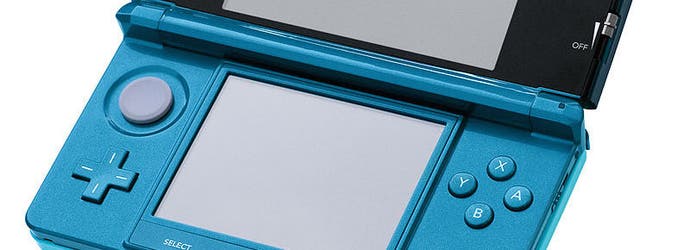
Launch date: February-March 2011 (Japan, Europe, North America)
UK launch price: £229
Number of launch games in the UK: 13
Key launch games: Pilotwings Resort, Nintendogs + Cats
Unit sales to date: 65 million
How was the launch perceived? Nintendo's most curious system since the Virtual Boy had a gimmick powerful enough that seeing, quite literally, was believing, its stereoscopic 3D screen taking the technological fad of its time and running with it in a strange new direction. Good job the gimmick was strong, because the launch line-up was very limited in quality, even if the quantity was there. Third-party support ranged from mediocrity like Asphalt 3D, Super Monkey Ball 3D and a poor Splinter Cell port to enjoyable curios such as Ghost Recon: Shadow Wars - a turn-based tactical game headed up by none other than Julian Gollop - and Ridge Racer 3D, which would have been a series highlight for Namco's racer if it hadn't been few years too late. Nintendo's own efforts were equally uneven, from the overdue and entertaining revival of Pilotwings to the throwaway thrills of Nintendogs. It'd take a while before anything truly noteworthy launched for the 3DS, ensuring it took time to gain momentum and provided plenty of frustration for early adopters. But the big problem was price: over £200/$200 was home console money, and people simply weren't buying a handheld at that price. A dramatic and humiliating price cut was just a few months away.
And how did it do in the end? The 3DS was always going to have a hard time as its territory was slowly squeezed out by mobile gaming, so it's a small miracle it has enjoyed the success it has. While falling well short of the numbers seen by its predecessor, strong first-party support and Nintendo's canny move to get Capcom's Monster Hunter series onboard has ensured high adoption rates both in Japan and further afield, while the resurgence of the Pokémon phenomenon has given its twilight years a certain sparkle. Nintendo maintains it will carry on supporting the handheld well after the Switch launches - and a respectable release line-up throughout 2017 suggests it'll be true to its word, for now - but similar overtures were made for outgoing hardware upon the introduction of the Game Boy Advance and Nintendo DS, and they didn't really pan out. Whatever the future holds for the 3DS, it will be remembered as a fitting end to the DS line and a valiant attempt to see off the threat of mobile before Nintendo itself succumbed to that market.
Wii U

Launch date: November-December 2012 (North America, Europe, Japan)
UK launch price: £250
Number of launch games in the UK: 31
Key launch games: Nintendo Land, New Super Mario Bros. U, ZombiU
Lifetime unit sales: 13 million
How was the launch perceived? Well before the Wii U was announced, rumours were circulating about a 'Wii HD', and in hindsight that might have been a better sell than the weird hybrid Nintendo ended up with. There was confusion upon its unveiling about where exactly the differentiating point lay with the Wii U, and it was destined to live in the shadow of its outrageously successful predecessor - without a key feature to distinguish itself, it was too easy for prospective buyers to confuse it as an unnecessary add-on for the Wii. Nintendo Land did its very best to convince players about the potential of a second screen and asymmetric play, though it would end up being one of too few games that made any sort of attempt to play to the Wii U's eccentricities. ZombiU also had a fair crack at making use of the GamePad's second screen, and it was part of a healthy line-up of third-party games on day one - Mass Effect 3, FIFA, Darksiders and Assassin's Creed suggested that the Wii U wouldn't be short of big name titles.
And how did it do in the end? Of course, that support dried up soon enough, and after the phenomenon that was Wii, the dismal numbers met by its successor - comfortably Nintendo's poorest-performing home console, coming so soon after its most successful - must have been a sharp wake-up call for a company that had allowed itself to get complacent. The shortened life-cycle of the Wii U hasn't been without merit, though, with Nintendo retreating to its core audience and some of its core values, delivering with the likes of Super Mario 3D Land, Xenoblade Chronicles X and Mario Kart 8 some of its finest games of recent years. Playing to a smaller audience also encouraged Nintendo to experiment, introducing its first new in-house character-led IP in over a generation with Splatoon, which will likely be remembered as one of the Wii U's greatest successes. If it inspires the company to keep pushing its new generation of designers to the fore, it may well prove the foundation of plenty of successes to come.
So what does this all tell us about Switch?
The first thing that struck me as I looked through this history: the size of the launch line-up tells you absolutely nothing. Launch rosters of 15, 20 or more games are commonplace these days, but it was not always so, and some of Nintendo's greatest successes - including Game Boy and SNES - made their debuts with just a tiny handful of supporting games. By the same token, a bulging launch line-up is no guarantee of success or of a healthy software catalogue in the long term; just look at GameCube and Wii U. Nor is it even, necessarily, a good thing in itself, as anyone who was on review duty for Wii launch will tell you. Considering this, the Switch's tiny launch line-up seems pretty irrelevant.
In fact, you only really need one game - but it helps if it's the right one. From Tetris, through Super Mario 64, to Wii Sports, Nintendo has a great track record of defining its consoles with iconic launch titles that can even change the way people think about video games. I don't think this looks so great for Switch. With Zelda: Breath of the Wild, Nintendo is following a playbook from Wii launch - bringing a major, mature project aimed at hardcore fans over from the predecessor console (and it's a Zelda game to boot). The game looks great, but it's the wrong playbook. Twilight Princess was a conservative rearguard action that was ultimately irrelevant to Wii's success. You can argue that you need a traditional AAA console game to sell the idea of taking such games with you on the move, which is Switch's main selling point; but I still think it would be a healthier sign if Switch had something bespoke, something new.
Then we come to the issue of price. As you can see, Nintendo has a pretty patchy record here, and it has got it wrong (Nintendo 64, 3DS) as often as it has got it right (Game Boy, Wii). At £280, Switch seems to fall into the former category, especially since some may perceive it as a handheld, and there is a lot more price sensitivity around handheld consoles. 3DS shows that the situation can be saved if Nintendo is prepared to cut prices deep and early, and make it up to early adopters somehow. But I think the closest comparison here is Nintendo 64, where the price of the console was one thing, but the price of games - due to sticking with an unfashionable solid-state format - was another. N64 did OK, ish, but the combo of pricing and format marginalised it with both the industry and public, and I suspect the same will hold true for Switch.
The N64 comparisons keep coming: consider the complete dearth of third-party support and the threadbare software schedule for the first year or so. But this can be seen in an encouraging light, too. N64 - and GameCube after it for that matter - was not a smash hit, but it kept its head above water and is now remembered with great fondness by fans. Perhaps the same fate awaits Switch?
So, going by the historical evidence, Switch's undeniably compromised launch should not be regarded as a death sentence. Even SNES had a less-than-ideal start in life, while the company's two greatest successes, DS and Wii, were the subject of confusion and ridicule at their debuts. The cautionary tale of Wii U is hard to avoid, of course, but just because it's the most recent doesn't necessarily mean we should hear it loudest.
There is a broader theme to this history lesson, through, and it's especially relevant to Switch, which attempts to roll Nintendo's home console and handheld businesses into one. Look through Nintendo's record, and the sales fortunes of its home consoles have always been spotty, with the highs (NES, Wii) outnumbered by the lows. By contrast, its position in handhelds has been unrivalled since day one. Game Boy and DS have only been outsold by PlayStation 2; GBA sold in huge numbers despite lacking any truly remarkable features or software; 3DS has salvaged better sales than SNES from a terrible launch and a market that was supposed to be dying at the hands of smartphones.
This is Nintendo's patch, and while it may be slowly shrinking, it only takes a new Pokémon game to secure its borders for another few years. A Nintendo handheld has never sold less than 60 million. So Nintendo's decision to frame Switch as a home console you happen to be able to take with you in its initial marketing push seems deeply misguided. Sure, it doesn't want to cut 3DS off at the knees just yet, but this is the company's future we're talking about. And it's surely Switch's future too. I wouldn't be surprised to see that messaging change before the end of the year.
